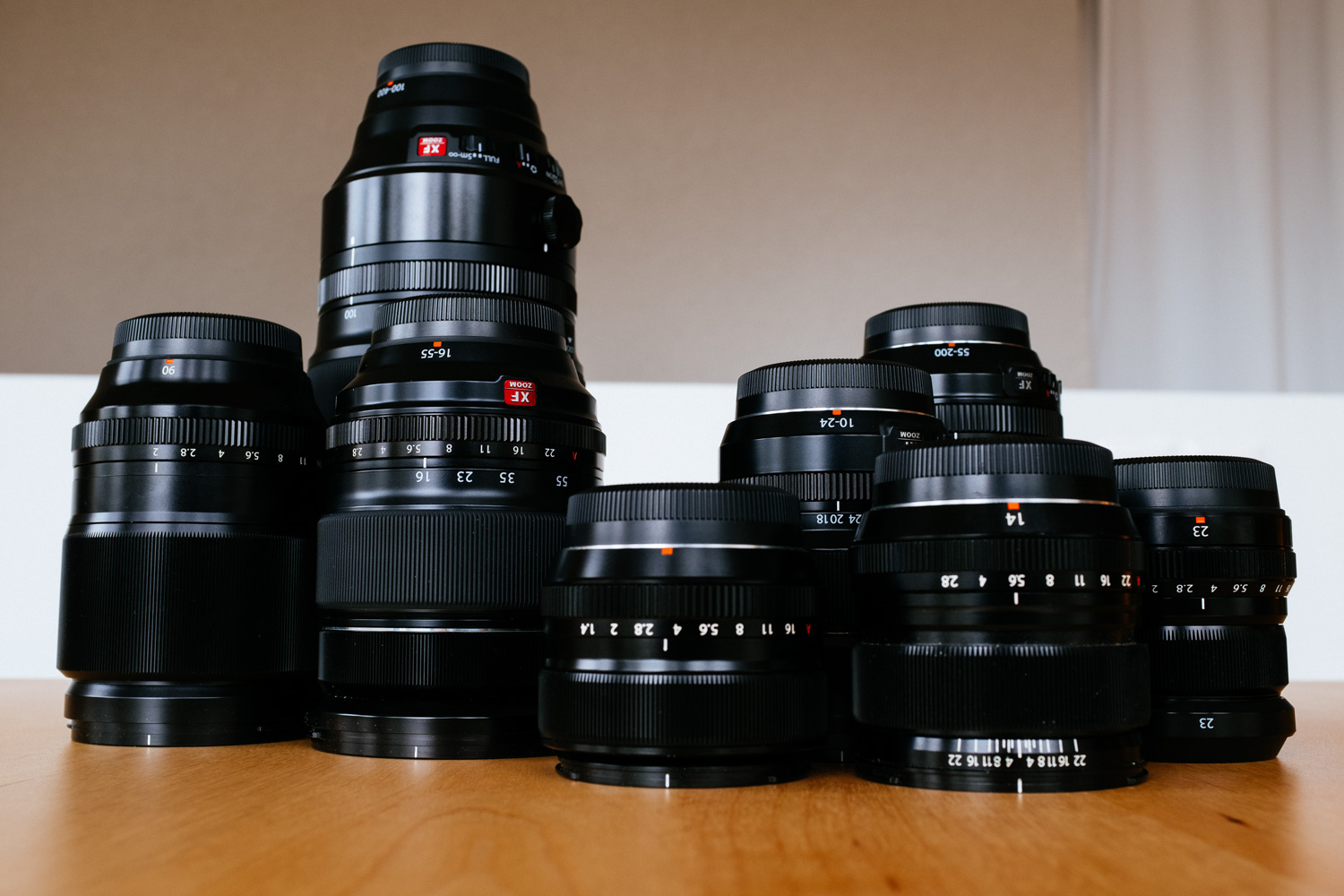 FUJIFILM X100F (23mm, f/8, 1/2 sec, ISO200)
FUJIFILM X100F (23mm, f/8, 1/2 sec, ISO200)
The reason to shoot with a system camera is to be able to change lenses and the main reason why I shoot Fuji are their lenses.
When I bought the X Pro-1 in 2012 there were only three lenses and I got two of them: the XF 18/2.0 R and the XF 35/1.4 R, now I have 11. Almost too many. Time to have a look at the statistics. Thanks to Lightroom it’s a piece of cake. What are my favourite lenses and what are the lenses I hardly use at all.
OK, of course I check my statistics from time to time and I already knew that the XF 14/2.8 R is my favourite lens but I was still surprised by the result. I took one third of all images with the 14mm. Second place the XF 23/2 WR followed by the XF 35/1.4 R. Roughly 50% of all images I took with those three lenses.
There is a reason for it. Those are my three favourite lenses and my standard set of lenses for my business trips in Asia. Two of them (14, 35) were already with my on my very first business trip to South East Asia that covered six countries in early 2013. Since then I traveled to South East Asia, East Asia and India many times but the set of lenses hardly changed. When I the XF 23/1.4 R came out I started to take that lens with me on my trips to Asia and I even took the XF 56/1.2 R with me on one trip but I always came back to a lighter setup.
My lightest camera gear ever was the X-T1 plus 14/2.8 and 27/2.8. Superlight but very capable at the same time. I missed the aperture ring though and as soon as the XF 23/2 WR came out I changed to 14/2.8, 23/2 and 35/1.4. It also helped that the improved AF of the X-Pro2 made the XF 35/1.4 R a much more attractive lens for me. Here is how my standard setup looks like. It all fits comfortable in a Think Tank Retrospective 5 shoulder bag. Still the very same shoulder bag that has travelled around the world a couple of times with me already. Last image of the group shows the lens statistics for trips to Asia and India.
 Canon PowerShot G7 X (21.082mm, f/4, 1/6 sec, ISO200)
Canon PowerShot G7 X (21.082mm, f/4, 1/6 sec, ISO200) Canon PowerShot G7 X (10.835mm, f/4, 1/8 sec, ISO200)
Canon PowerShot G7 X (10.835mm, f/4, 1/8 sec, ISO200)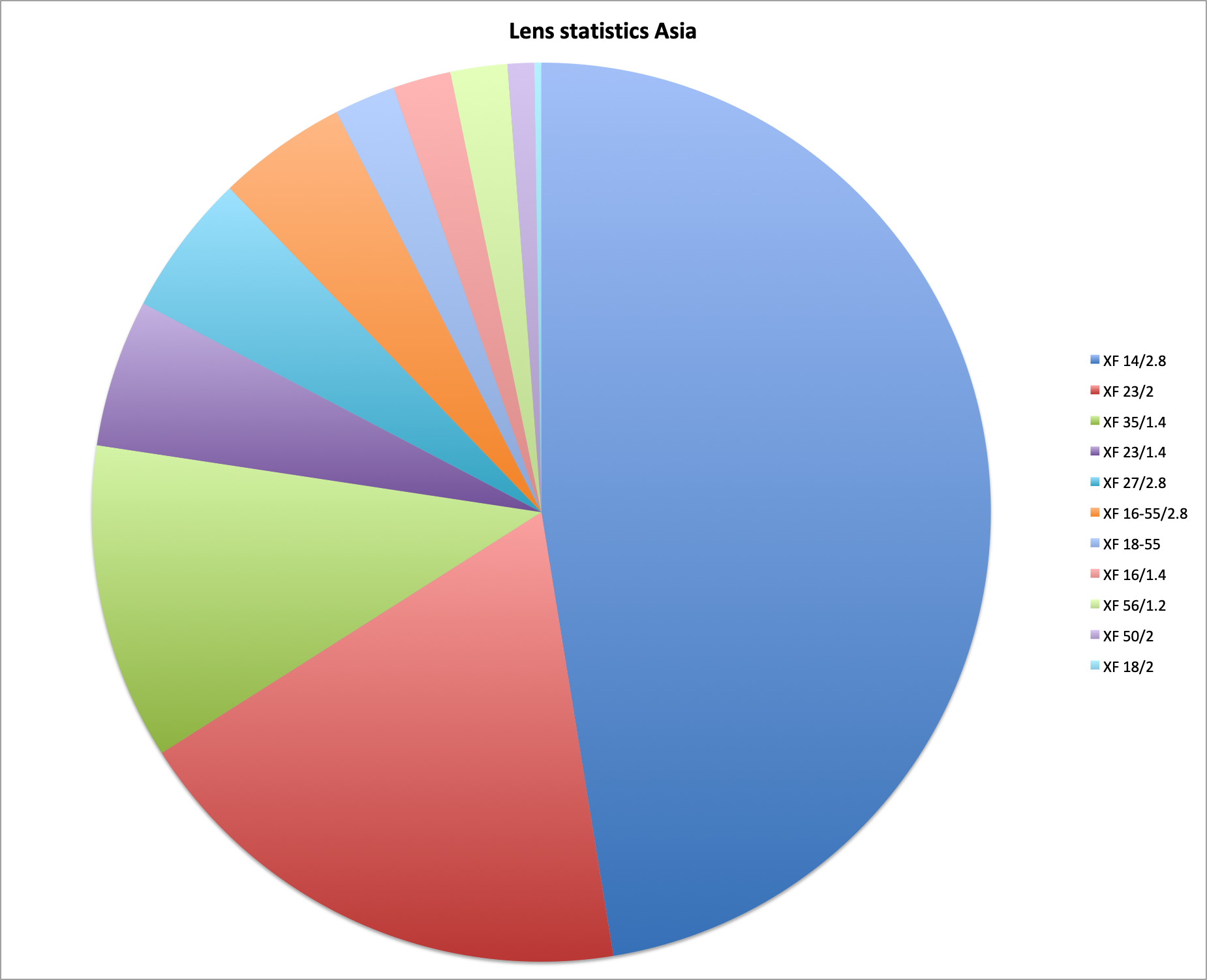
Speed vs comfort:
I mentioned that I currently have 11 lenses but in the statistic there are 16. Reason is that I already sold or exchanged some lenses during the last couple of years. The first lens I sold was the XF 18/2 R. Not because I think it is not a good lens but simply because the much wider XF 14/2.8 R worked better for me.
I also sold the XF 18-55 R because I never really liked it and as a consequence I didn’t use it a lot. The XF 16-55/2.8 WR that I originally dismissed because of size, weight and the lack of OIS is a completely different story. It’s a fantastic lens.
I sold the XC 50-230 R after I got the XF 55-200 R but consider to replace the XF 55-200 R with the XF 50-140/2.8 R this year. And I sold the XF 27/2.8 because I never used it since I got the XF 23/2 WR. And finally I put my XF 56/1.2 R on an online platform to sell it to get the XF 90/2 WR instead. Thanks to the fact that I mentioned that in my ad a guy contacted me who wanted to replace his 90/2 with the 56/1.2. We met half way on the Autobahn, had lunch together and exchanged lenses.
I still have two lenses that I don’t use that often but somehow can’t sell. There is the XF 16/1.4 WR that I don’t use that often because I prefer the more dramatic angle of the 14/2.8. It’s a shame because the XF 16/1.4 WR is a fantastic lens. If I would be forced to sell a lens this would be the lens that has to go though.
And the second one is the XF 23/1.4 R. I know that this is just a personal opinion but for me this is one of the best lenses Fuji has ever made. Of course it also has its weak points but it creates fantastic images. The aperture is 1.4 just like on the XF 16/1.4 WR but because of the longer focal length it is much more effective to blur the background. It’s a great lens for portraits if you want to include some context. For my Asia trips it has been replaced by the XF 23/2 WR simply because of size and weight but every time when weight is not the most important thing or if I plan to do some environmental portraits this lens is my first choice.
Below you can see that the size difference is substantial.
 FUJIFILM X-T1 (37.4mm, f/8, 1/2 sec, ISO200)
FUJIFILM X-T1 (37.4mm, f/8, 1/2 sec, ISO200)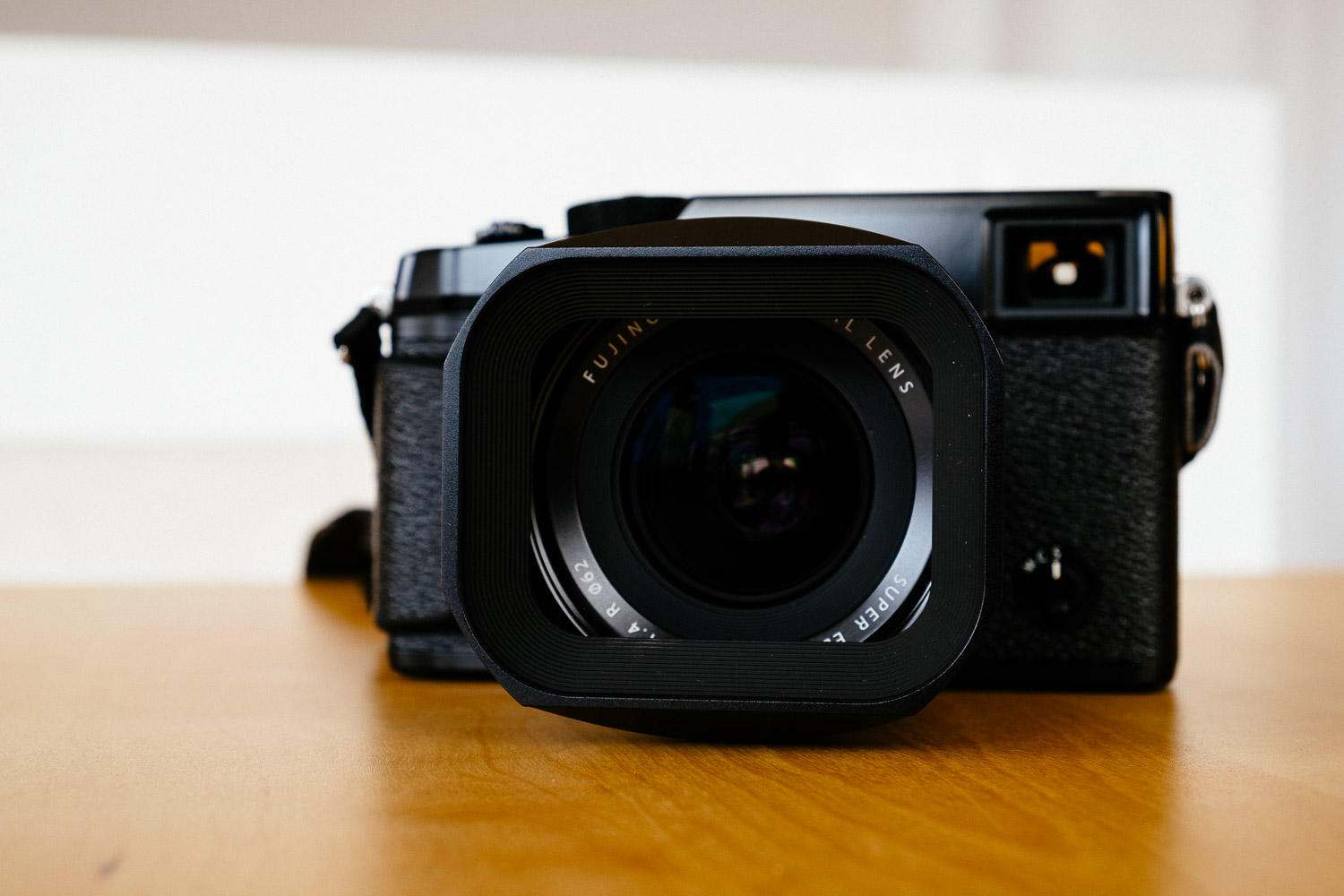 FUJIFILM X-T1 (40.7mm, f/8, 1/2 sec, ISO200)
FUJIFILM X-T1 (40.7mm, f/8, 1/2 sec, ISO200) FUJIFILM X-T1 (40.7mm, f/8, 1/2 sec, ISO200)
FUJIFILM X-T1 (40.7mm, f/8, 1/2 sec, ISO200)
It seems that I have become obsessed regarding the weight of my camera gear. And that’s partly true. When I got the Fuji X-Pro1 I was shooting with full frame Canon gear. The Fuji was just to have a small, high quality camera in case I don’t want to take my big camera with me. It became my standard for my business trips and quickly it became my go to everywhere camera. I took me some time to realise that the only time I still shot my DSLRs was during my main vacations in the USA.
On those big trips in the USA I always had a small camera with me for the evenings or in the cities. On my first vacation in the USA in 2010 the small camera was a Sony NEX 5. A super small camera with APS-C sensor and interchangeable lenses. It was a game changer for me. I was used to carry an excessive amount of camera gear with me practically everywhere when on vacation. The Sony NEX5 was the camera I shot most with during this vacation even though I brought two DSLRs.
But of course the shooting experience was compromised, the lenses were far from excellent and poor white balance and colours meant that there was a lot of post processing work needed to make the images look good and to make the colours match the output of my Canon cameras.
After I got my X-Pro2 in early 2016 I sold my Canon/Sony FF gear and went all Fuji. Now life is simple. During the day when I’m driving around to scenic spots I shoot the X-Pro2 with the big zooms. In the evening when I only want to bring a small camera I take the very same X-Pro2 but with the 14, 23 and 35mm lens. Just the gear I shoot in Asia. And the best thing is that the files are exactly the same. No more work to match the output of different cameras.
Of course the X-Pro2 will never be a really compact camera but I have large hands. For me a very small camera like a X-E3 or X-T30 simply feels a little awkward. The Sony NEX5 was super small but I used to shoot it differently. There was no viewfinder so I switched the screen upwards and shot it from waist level (medium format style) and used my thumb to push the shutter button. Here is a size comparison with my X-Pro2. And the second picture below shows the lens statistic for my last trip to the South West of the USA last autumn. It’s clear to see that my new XF 16-55/2.8 WR was the most important lens for that trip by far. Maybe I should have used the XF 10-24/4 OIS a little but more often but most of the time I have tried to get away with 16mm. Second lens was the XF 100-400 WR which replaced the XF 55-200 R for most of the landscape shots simply because it is a much better lens.
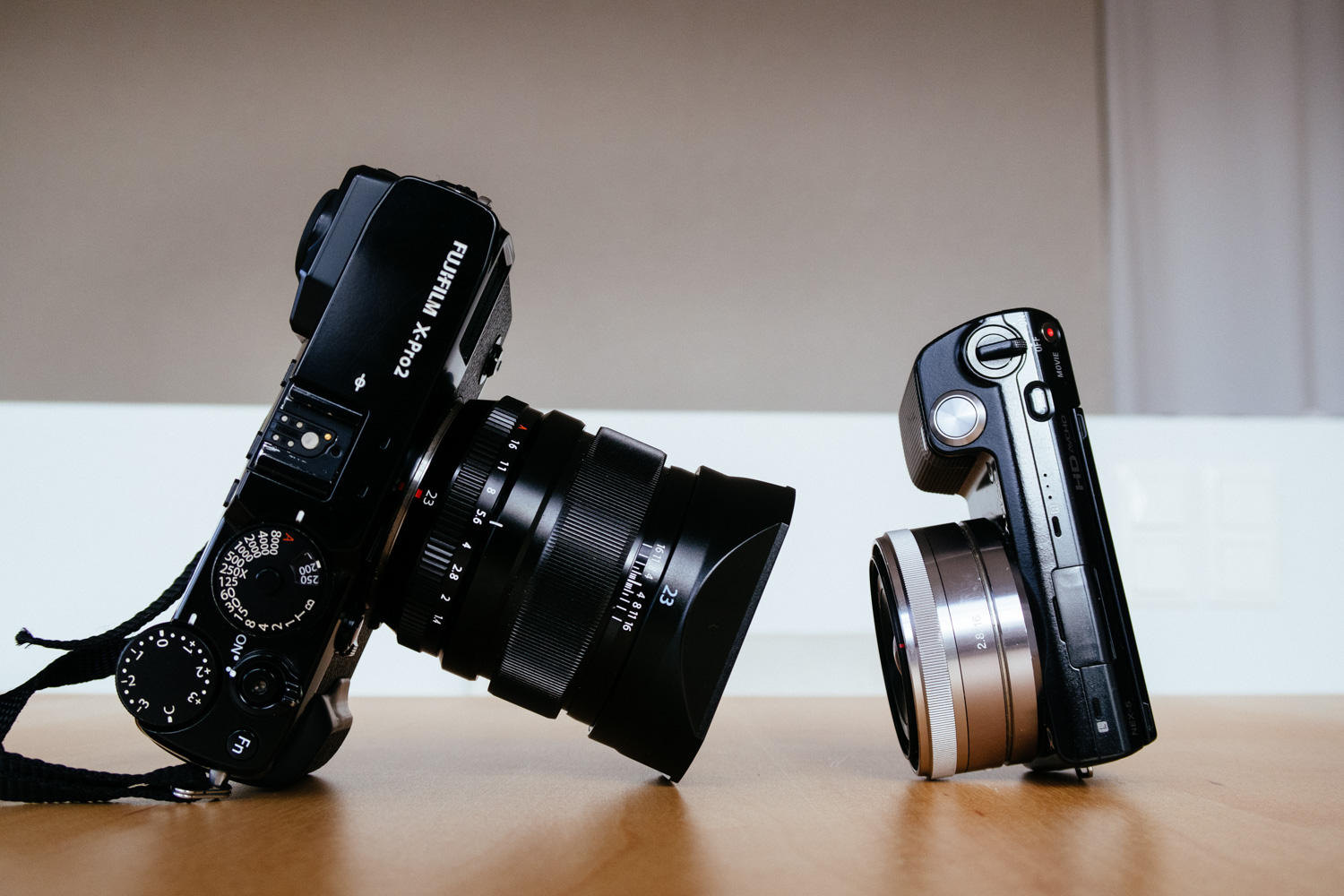 Canon PowerShot G7 X (14.224mm, f/4, 1/160 sec, ISO200)
Canon PowerShot G7 X (14.224mm, f/4, 1/160 sec, ISO200)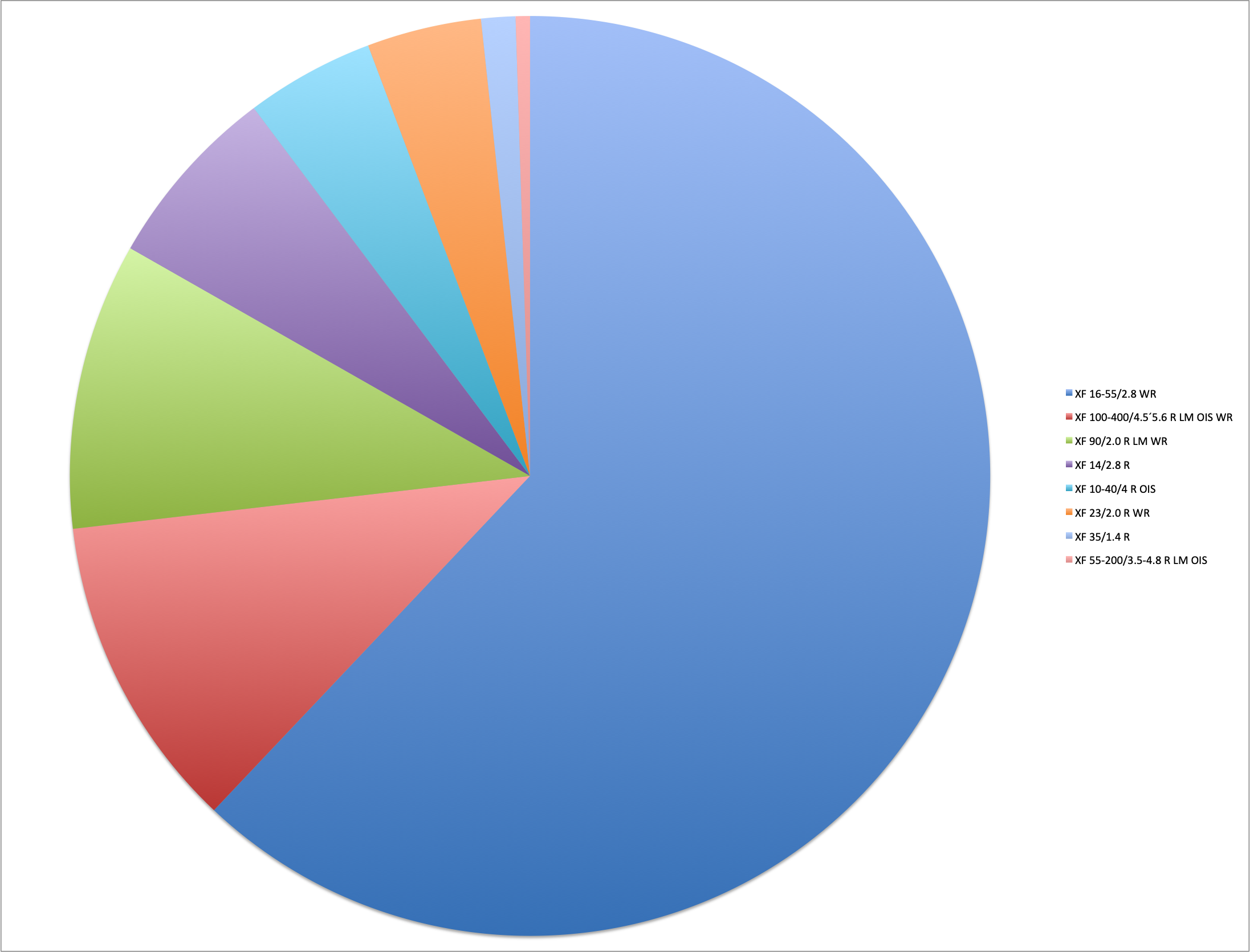
Conclusion:
What makes a system camera a system are the lenses. Fuji has made an excellent job to create a completely new camera system within just seven years.
You can have professional grade zooms like the XF 8-16/2.8 WR, the XF 16-55/2.8 WR and the XF 50-140/2.8 WR to cover all relevant focal lengths for your trip or you can select some of their excellent primes or you can keep it simple and take nothing but the kit lens. And of course you can combine zoom lenses with primes like I do. The great thing about Fuji is that everybody will find something that fits his need. And if you consider the optical quality of most of their lenses they are very affordable too.
All wishes covered? Yes but if Fuji would be crazy enough to listen to me I would recommend to make an XF 14-35/2.8 WR. But only if they manage to keep it compact.

